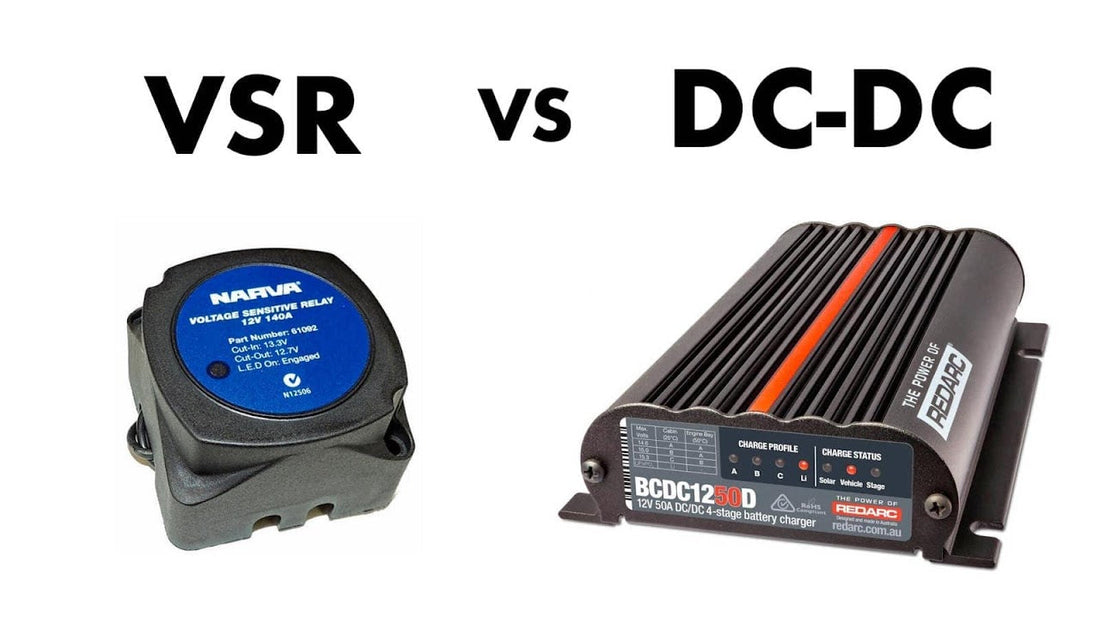
Dc-Dc Charger vs Voltage Sensing Relay
Share
DC-DC chargers and voltage sensing relays are both used in dual battery systems in vehicles, especially in setups where an auxiliary battery (like a leisure battery in a camper) needs to be charged from the vehicle's main battery or alternator. However, they function differently and offer varying features:
- **DC-DC Charger:** DC-DC chargers are sophisticated devices that regulate the charging process between the vehicle's main battery and the auxiliary battery. They convert the voltage from the main battery to a stable output suitable for charging the auxiliary battery. DC-DC chargers can provide a multi-stage charging process, ensuring that the auxiliary battery is charged optimally and efficiently, regardless of the condition or voltage of the main battery. They're particularly useful for charging deep-cycle batteries and can protect sensitive electronics in the auxiliary system by providing a clean and steady charging voltage.
- **Voltage Sensing Relay (VSR) or Split Charge Relay:** A voltage sensing relay, sometimes referred to as a split charge relay, is a simpler device that connects the main battery to the auxiliary battery when it detects a certain voltage threshold (usually when the engine is running and the main battery is sufficiently charged). It allows current to flow from the main battery to the auxiliary battery for charging. While effective, VSRs don't regulate the charging process or voltage output; they simply connect the batteries when the conditions are met.
In essence:
- **DC-DC Charger** offers more sophisticated charging control, suitable for various types of batteries, and provides a stable and regulated charging process.
- **Voltage Sensing Relay** is a more basic system that connects batteries based on voltage levels, lacking the advanced charging control and regulation features of a DC-DC charger.
The choice between the two depends on factors like the type of batteries being used, the electrical system complexity, the need for precise charging control, and the level of protection desired for sensitive electronics in the auxiliary system. For instance, if you have a camper with sensitive electronics or lithium auxiliary batteries, a DC-DC charger might be the preferred option for better charging management and protection.
